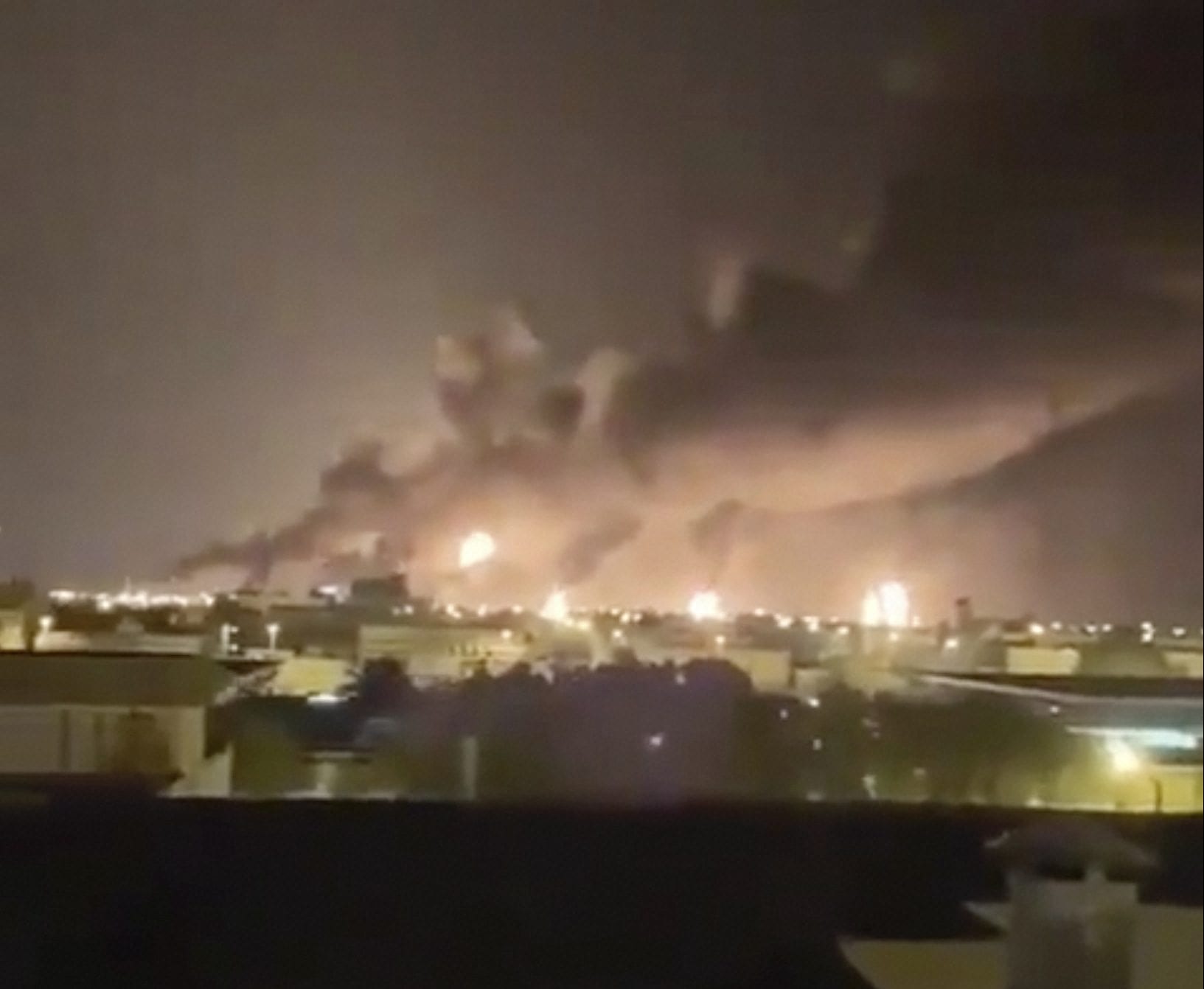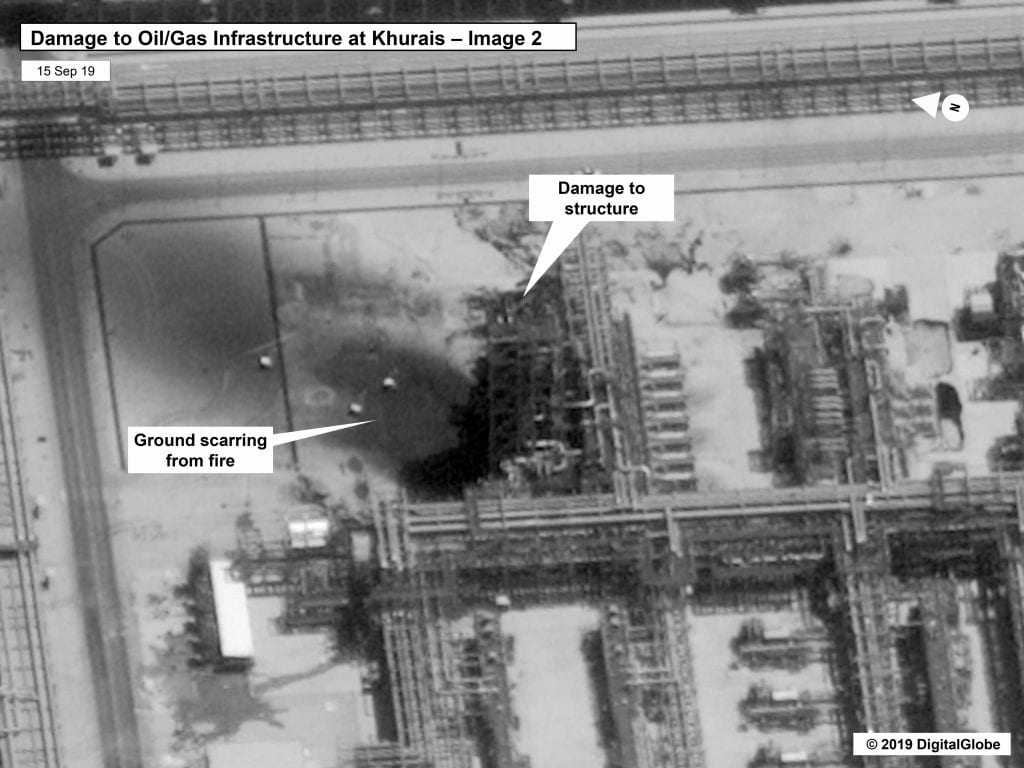
US, Saudi seething over drone attacks; what next?

The irony of extended conflicts is they invariably move out of the front pages and media attention thereby receding from public memory. Until a major development yanks them back into the limelight – like the drone attacks on the Saudi oil fields that made the world sit up and take notice.
The oil market is in a tizzy, prices have gone up and questions are being raised about the stability of the oil trade and whether there are worse things to follow. India is among countries heavily reliant on oil imports, and much is at stake for the nation already reeling under a severe economic downturn.

The drone attack is a direct fallout of the bloody fighting, initially within Yemen influenced by the Arab Spring of 2011 which eventually spilled over into a full-scale conflict in 2015 between a Saudi-UAE combine and Yemen controlled by the insurgent Houthi group, a Shia sect, now in power in the capital Sanaa.
The Saudis are militarily backed by the United States and its allies, the United Kingdom and France. On the other side, the Houthis are being supported by Iran. Caught in the crossfire of Saudi-led fire, thousands of common Yemenis have been killed, properties destroyed and scores have been displaced from their homes and towns within the country.
Also read: Saudi Arabia presents evidence of attacks on oil fields, points to Iran
According to the United Nations, at least 7,290 civilians have been killed and 80% of the population – around 24 million – are in need of humanitarian assistance, including 10 million who are on the verge of starvation and depend solely on food aid to survive.
Yemen, which was stable eight years ago, has for all practical purposes been destroyed. Occasionally, news about Yemen bobs up only to quickly go down almost immediately with the result that the country is afloat on a sea of uncertainty with no sign of an end to the conflict and suffering.

Arab spring fallout
When the Arab spring engulfed West Asia (or, the Middle-East as is known worldwide) Yemen too saw civilians rising up against the government of Ali Abdullah Saleh. The Zaidi Shia Houthis, who had been fighting an insurgency since 2004 used the opportunity and joined the democratic protests giving that much muscle to the uprising. Eventually, in February 2012, Saleh stepped down and was replaced by his deputy Abdrabbuh Mansur Hadi.
Saudi Arabia managed the transition and ensured the enthroning of Hadi. Soon, Saleh (a Shia himself) joined the Houthis and the uprising continued, albeit with intensified violence. It was at this juncture that the Yemeni internal troubles fell straight into the lap of a long-standing bitter rivalry between two powerful neighbours, Sunni-dominant Saudi Arabia and the Shia-led Iran.
Iran backed the Houthis while the Saudis supported Hadi. With Saleh, who had the loyal following of a section of the military, joining the Houthis the balance of power tilted against Hadi and he was ousted from power. However, the US and its allies recognise the Hadi dispensation as the real government. The Houthis replaced him, and since then not only has it brought in the Saudis into the conflict, it has also got its allies, the United States, France and Britain who want to prevent Iran from expanding its footprint using the Houthis in Yemen.

The US, France and Britain are already engaged in a bitter conflict in Syria against the Bashar al-Assad government which is backed by Iran and this fight has spread to Yemen. Unfortunately, for this tiny Saudi neighbour what started off as an internal movement for democracy has degenerated into a regional conflict backed by the big global powers.
Though the Saudis and the United Arab Emirates are militarily powerful compared to the Houthis, they have not been able to make headway in Yemen. Despite the Saudis pummelling, pounding and blasting Yemen, not even sparing a school bus with students, the standoff has continued.
With the United Nations pressuring the conflicting parties to make peace, a series of meetings to bring peace have been held but to no avail. The Stockholm agreement among the warring parties in December 2018 brought some hope, but that has not worked.
Amidst this, in May 2018 the US administration under Donald Trump opened another flank against Iran hoping to cow it down by unilaterally abrogating the nuclear deal with Tehran. The sanctions against Iran ostensibly to thwart its nuclear project has indeed affected the country economically but Tehran has not given in.
Also read: Mix of economics, politics leading to new high in crude prices
Aramco drone attack clear message from Iran
The drone attack on Aramco oil facilities in Saudi Arabia is, in this context, clearly a message from Iran that it can take on its Sunni rival and the big powers in ways least expected. Saudi’s Holy Grail, aka its oil trade, has exposed chinks in Riyadh’s defence and has shown that it is vulnerable too.
Though Tehran has denied it had anything to do with the attack, it is inconceivable that the Houthis on their own could have mustered the resources to inflict such serious damage on the Saudis. Already, the US claims it has evidence that Iran was behind it.
Given Trump’s track record as an unpredictable individual given to bouts of belligerence, his response will attempt to match the audacity of the drone strike and inflict equal, if not more, damage either on Iran, or its interests somewhere including in Yemen.
Saudi Arabia too will want vengeance as the attack on its oil facilities is a serious loss of face showing up its military in poor light. The situation is therefore precarious unless some third country, not excluding the US’s European allies, or even the United Nations steps in quickly to defuse the situation.

